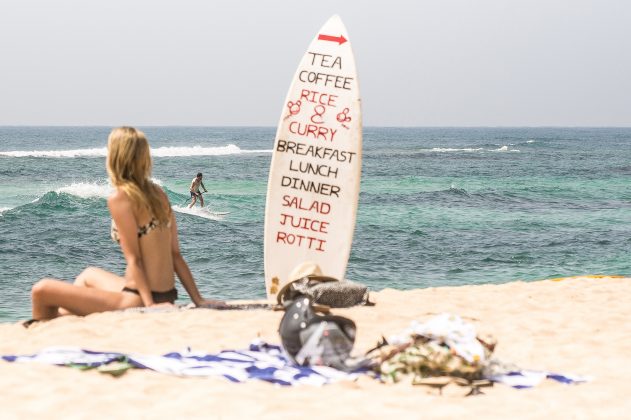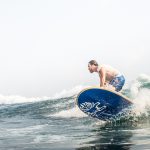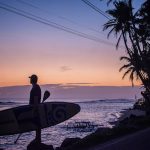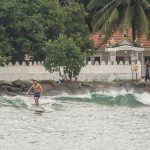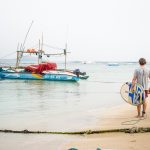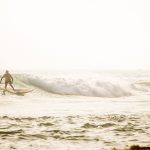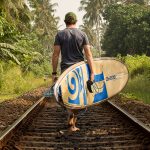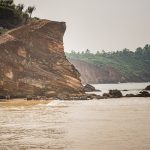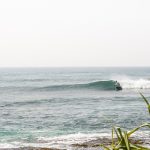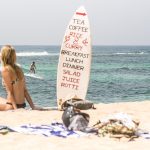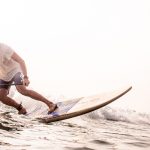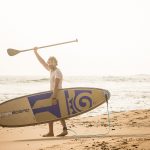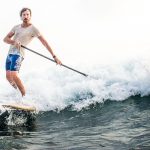SRI LANKA
Words Franz Orsi // Photos Franz Orsi, Vania Marques & Raphael Hoesli
I am sitting in a tuk-tuk carelessly sneaking through the chaotic traffic of Colombo way faster and way more dangerously than it should be. All around me I pass by thousands of people looking busy with their everyday lives. Drivers, beggars, porters, passengers, policemen with white gloves, buddhist monks dressed in orange, school boys in uniform, street food sellers, and hordes of ordinary people just going somewhere. I wonder what they do all day. I wonder what their reality is like. I came to Sri Lanka to experience first hand the spirit of a country in which everyone these days seems to be interested in.
I like being in places like this, places were everything is in the making and that somehow give me a glimpse of what our future will look like. They’re called emerging economies, I call them places of tomorrow. For me, they resemble the way most of our world will look in a few decades from now. For the good and for the bad. They serve as open-air labs for social experiments in finding alternative paths to a new reality. For sure Sri Lanka is typical of this type of place with its booming economy, increasingly recognised as a top tourism destination and with a fast growing hype, based on Instagram stories and fashionable shots of cool people and hipster-surfers coming for its mellow waves and tropical beaches. So here I am to better understand Sri Lanka, its waves and its hype. Sri Lanka, in fact, is an interesting and varied country, home to a wide array of cultures, traditions, ethnic groups and languages; it also has the highest biodiversity density in Asia. While the culture, history and wildlife are a big draw, the main attractions for surfers are the variety of waves, warm water, and reliable Indian Ocean swells. After a few days spent visiting the capital city, I decided to travel down south in search for some surf.
After a few hours driving from Colombo, I get to Bentota – a calm village by a river mouth on the west coast where much of the tourism consists of run-down resorts occupied mostly by elderly European tourists. Not exactly the kind of place I was looking to spend my time, but a strategic stop on the way to the south. To my great surprise during my stay, Bentota revealed its potential for windsurfing – it was windy everyday, over 20 knots. Sadly this time I didn’t bring any windsurf or windSUP gear with me. Luckily I get to know Kosala, a friendly local who proved to be a national windsurf legend. Kosala and I are the same age and competed in windsurfing when we were teenagers: we soon realised that we even crossed each other at some world championships we both participated in representing our countries. Seeing my excitement with the perfect windsurf conditions, Kosala lent me an old windsurf rig for a few hours. It was enough to have a total blast and nice flashback to how I fell in love with the ocean and the wind when I was a kid. Kosala then suggested we quickly head down south in order to meet the incoming swell that was predicted to hit Sri Lanka in a couple of days.
Sri Lanka with its teardrop-shape falling from the southern tip of India, is one of the best-known and busiest surf destination on the Indian Subcontinent. The waves here are from the same swells which regularly sweep up the Indian Ocean from the Roaring 40s and its south coast is open to the same regular, long distance SW swells that hits Indonesia.
Even if the island sits right in the middle of the monsoonal wind zone, its peculiar shape in relation with the prevalent wind patterns of the Indian Ocean means that there is always a part of the island where you can find favourable offshore winds and glassy waves.
So, while the Sri Lankan east coast sandy shores have been famous since the 70’s among expats and travelling surfers for their classy waves during the prime Indian Ocean swell season from May to October, the south coast has remained relatively unexplored due to the unfavourable wind patterns that plague this stretch of coast during the summer swell season. With the prime swell season cursed by onshore winds, surf travellers wanting to score glassy conditions started to venture to the south coast during the much quieter swell period of December to March. During this time of the year, in fact, it is perfectly possible to find waist to head high mellow surf along most of the coast.
So, through the decades a new epicentre for surfing started to rise on the south coast and a vibrant scene started to attract more and more surfers in search for mellow waves and warm tropical waters. But it is only during the last few years that the hype around Sri Lankan surf scene boomed, triggered by an explosive mix of beginner to intermediate-friendly surf and picture-perfect Instagrammable scenarios.
To me this all translated into booking a flight and pack what without any doubt became my favourite go-to board for mellow waves: the new Starboard Longboard 9’0” x 29”.
So with a small backpack full of camera gear, a few boardshorts and my longboard I embarked on a plane leaving the cold winter swells of western Europe to go exploring the waves of the Laccadive Sea.
The Laccadive Sea, in fact, is where I was heading: a body of water bordering India (including its Lakshadweep islands), the Maldives, and Sri Lanka. This warm sea, with stable water temperature through the year and rich marine life, is hit by consistent swell throughout the year but it is during the winter months of November-December to March that it really shines with favourable offshore winds and mellow waves perfect for my longboard. The International Hydrographic Organization defines the limits of the Laccadive Sea to the south as a line running from the Addu Atoll in the Maldives to the Dondra Head to the most southerly point of Sri Lanka. And this where we were heading.
To the east of this point, much of the beachbreak is shoredump most of the time except for some rocky coves that can transform unruly swells into something worth searching for. Here spots like Dickwella, Nilwella, Tangalla and the extensive sandy coastline leading to Hambantota, before the main road heads inland to skirt the massive wilderness area of the Yala National Park and onto the sandy right points of southeast Sri Lanka, are truly gems that on the right day can deliver perfect surf. Unfortunately for those perfect point breaks to work it is needed a bigger swell which we didn’t encounter during our trip to Sri Lanka.
On the southwest coast however, before heading to Dondra Head, options for some fun surf are always within a 5 minute ride by tuk-tuk. Here, one area really shines: the Midigama to Ahangama coastline. This stretch of coast presents innumerable options from the most beginner friendly setups to the most advanced waves. The density of spots in this area also guarantees that you can always find a wave with less crowds and fun conditions. Personally, I found the waves in front of Gurubebila village to be pretty entertaining.
Between Weligama and Midigama, this tiny village which is actually just one dirt road leading to the beach, has a couple of waves right out front: Plantations and Coconuts, left and right point breaks, both that can peel for up to 200 metres. Both waves are not-so-shallow reef breaks, so they are good for stand up paddle surfing.
In addition to this, the advantage is that you can move pretty easily from one wave to the other with a SUP “escaping” the occasional crowd and playing with the incoming sets.
As for most Sri Lankan surf spots, it is best to get there early before the wind does and also before the sun gets too aggressive on your skin! Paddling hard on a SUP board in the peak of the day under the Sri Lankan sun is not something I’d recommend to anyone with pale skin tones such as mine. So, my daily routine in Gurubebila for a week was waking up before 6 a.m., heading to the water, surfing countless waves on my longboard almost alone, then get out to have breakfast around 9 a.m. – for sure not a bad life, I could have go on like this for months!
While in Gurubebila, I took the chance to explore the countless spots of Midigama and Ahangama: the legendary Ram’s Right, a fairly heavy reef break, often barrelling – needless to say I didn’t surf here with my longboard SUP – and Lazy Lefts, a more deep water point just up from Rams that, as the name suggests, is a pretty chilled out left hand reef break. This was a fun long wave to ride on the new Starboard Longboard, experimenting with nose riding and gouging cutbacks.
Also in the same area, we tried the neighbouring Lazy Right, often overlooked in favour of Lazy Left, but in truth it’s a perfect wave for SUP. This point offers both a mellow right and a mellow left. The waves here break and reform and on the right swell conditions they can produce long rides all the way back to the beach.
Another great good spot we loved has been Kabalana. A few minutes further west from Lazy Right, Kabalana is a perfect A-frame that breaks over a sandy reef. This is a more powerful wave compared to Lazy Right and it has a steeper take off while still being really good to ride on a SUP longboard. Unfortunately it’s quality is no secret though, expect to compete for waves with a lot of surfers here.
After a few days in this area we moved a bit further to get a taste of some other spots, a bit further away from the crowd and therefore sometimes overlooked but with great potential, such as Madiha.
Located close to the city of Matara, Madiha features consistent swells and some 350m rides on a reef break setup. Its hidden location ensures that you can surf without jostling in the lineup and often savour the waves by yourself. This wave proved to be one of the best waves I surfed in Sri Lanka – even if sometimes it is a little bit too fast to SUP, it is still so much fun. On a wave like this, stepping on to the nose of the longboard to accelerate and pass sections ahead down the line is really a great feeling. This is what makes longboarding SUP so much fun, you can carve hard and go for big cutbacks or you can step on the nose for some crazy hang-fives making it so easy to ride for hundreds of meters on waves that build up and fade down, make sections or go flatter.
For this reason, you can understand why I am falling so much in love with my longboard: the mix of progressive manoeuvres and classic surfing you can do on this board just makes every ride so much more fun!
Sri Lanka has been a positive experience for me: even if the surf has never been world-class, I enjoyed my time playing in the water with a new board that simply allowed me to expand my horizons and surf in a new, more diverse and fun way. On a trip like this, no other board would have performed better allowing me to have fun in the water every given day.
As for the rest, Sri Lanka proved to be a country with great culture, great character and lively traditions, certainly surrounded by a big hype for being authentic, relaxed and beautiful – a hype that I hope won’t destroy the spirit of the place and its allure.
Hopefully, there will be many secluded coves and surf spots to find far from the crowds if you search for them carefully enough. After all, Sri Lanka was once called Serendib, an Old Persian name for this beautiful land, that must have been back in the days a true paradise on Earth.
Now, every paradise on Earth is getting lost due to excessive tourism and the curse of an Instagram hype that sometimes is too big to bear. Interestingly enough Serendib is also the etymological root of the word serendipity, so I still have hope that unplanned, fortunate discoveries can be made in this paradise lost and that more stunning, uncrowded spots, perfect for SUP are out there just waiting to be found. SUP International

